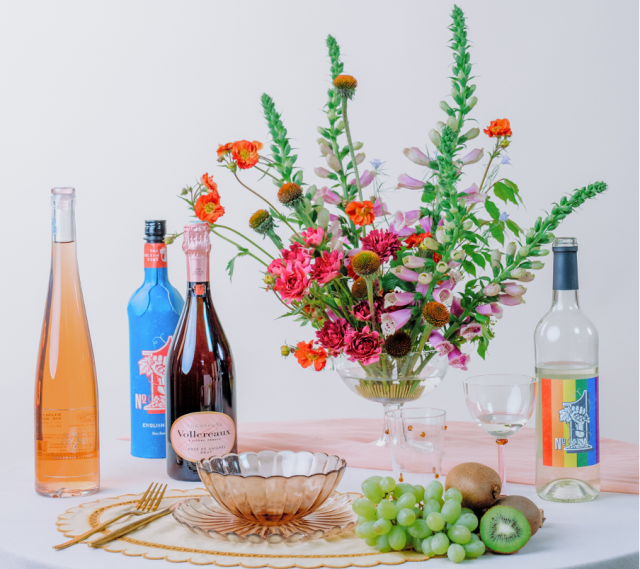This website uses cookies so that we can provide you with the best user experience possible. Cookie information is stored in your browser and performs functions such as recognising you when you return to our website and helping our team to understand which sections of the website you find most interesting and useful.
Can different coloured flowers change the taste of your wine?
The short answer? Yes. Viewing different flowers while drinking wine can change the perceived taste of what’s in your glass, a new study has revealed.

The study, called “Wine tasters’ sensory response to delicate and robust flower arrangements”, sought to find out how different bouquets could influence the experience of drinking wine.
It took place in two stages, first taking into consideration how different flower arrangements were perceived as either more ‘delicate’ or more ‘robust’ by participants.
The study said: “First, we seek to understand how the colour composition pattern of flower arrangements (e.g., value, saturation, and temperature) influence the subjects’ perception of flower arrangements’ delicacy or robustness.”
The second stage aimed to “verify the influence of visually delicate and robust flower arrangements on individual judgment of wines”.
The study was undertaken by The Secret Vine, the UK Centre for Excellence on Wine Research at Plumpton College and the University of Campinas. It recruited 41 volunteers to rate eight floral arrangements as either ‘delicate’ or ‘robust’ in an online environment based on the colour of their blooms.
Botanic styles were divided into three categories: the first used high-value flowers of pale pink, purple and blue hues, described as “low saturation and cool temperature’”in a “delicate” display.
The second was a display of bolder, brighter, and “heavier” stems in red, orange, and yellow, described as a “robust” arrangement, while the third option mixed the two styles.
Higher-value flowers with low saturation displayed at a cool temperature were perceived as more delicate compared with arrangements which consisted of lower-value flowers with a higher colour saturation at a higher temperature, considered more robust.
A second stage saw participants blind-taste two wines chosen by a panel of wine professionals while sitting alongside each different floral arrangement.
The two wines chosen for the study were a “delicate” Pinot Noir from Australia and a Tannat from Uruguay, which the study described as a “wine known for its robust character”.
Each taster was asked to rate the wine on a scale from delicate (0) to robust (10) and describe the wine.
The results, published in the International Journal of Gastronomy and Food Science, suggested that flowers significantly influence how tasters judge and describe wines. Both wines were perceived as being more delicate when tasted in the presence of the ‘delicate’ flower arrangement, compared with the more “robust” arrangement or no flowers at all.
Dr Heber Rodrigues, the study’s head researcher from The Secret Vine magazine, said: “Wine is one of the world’s great sensory experiences, and this new research is helping to uncover that the sensory extends to the overall environment, not just what is in the wine glass. Like wine, flowers are heady, evocative, beautiful to look at and often highly perfumed, but it is still surprising to see the powerful effect beautiful blooms can have on our perception of wine.”
Rodrigues argued that the research will “revolutionise how wine and flowers are paired”. He said: “While more work needs to be done, it shows event organisers can enhance their guests’ experience by correctly combining outside elements alongside carefully-chosen wines – and who wouldn’t want to drink that?”
Research was conducted on a panel of UK participants, and the experiment will now be conducted in different countries to assess whether liking ratings could be related to cultural background or the level of wine expertise. The study will also be replicated with respondents to different ages to assess potential generational differences.

